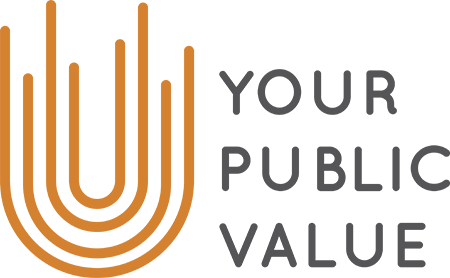Terrafiniti has launched an ambitious R&D initiative to drive innovation towards a sustainable future: Towards 9 Billion is a series of short books and a set of ideas and provocations to build a world ready to welcome 9 billion people, rather than fear their arrival. “A world of 9 billion capable citizens is an ambitious vision and a powerful driver for the development of economies, businesses and societies,” Terrafiniti argues. Joss Tantram is Partner at Terrafiniti. He explains to Your Public Value the role business should play to contribute to a sustainable planet, grow impact and deliver value for them.
Towards 9 Billion is a positive project, but it starts from quite a pessimistic standpoint…
“People talk about the coming global population and their impact as a catastrophe. Whilst that’s possible if we don’t make any changes, we also could consider the fact that there will be nine billion people on our planet by 2050 as stimulating change towards a sustainable future.
To some extent, it draws on “The Ultimate Resource” as described by Julian Simon. Humans do not get motivated by guilt or bad news. Businesses do not get motivated by guilt either. We believe that conceptualising a functional, people-centred market of nine plus billion people should be attractive to business. What if it were possible to have a stable and sustainable marketplace capable of involving more than 9 billion people? What opportunities would that open? Would that allow and drive companies to being part of changing the system, as well as their behaviour within that system as a clear area where their self-interest and the common good would align?
Is this project about considering companies as change agents?
It’s about redefining our capitalist-based approaches with companies at their centre. We call this “common self-interest”. If you are a large enough company to see the limits of the system you are in, then longevity naturally requires stewardship rather than exploitation. You have the power to stop abusing the system and pushing the boundaries until it collapses.
We want an approach that could evolve from current market-based operations. We looked at how the market works at the moment, focusing on accounting, finance and investments. We tried to find mechanisms and leverage points which might be re-engineered to give rise to different types of outcomes. We’re trying to identify and develop market-based solutions that might appeal to businesses.
Does it resonate with business? The huge majority of companies have not yet merged their sustainability approach with their corporate strategy.
There are limits to how far companies can engage in disruptive activities without structural adjustments. Only few companies will understand why sustainability is important. It can be because of their scale, their dependencies, or because they have particular insights from leaders or owners. Others will engage because there is a broad feeling that this is a developing norm that they should respond to. Finally, some investors play a key role in monitoring companies’ impact on the planet.
However, sustainability is not yet one of the features our system values. Sustainability is not yet a success criterion for economics, capitalism and markets.
Too frequently today, adjustments to the working of the systems focus only on post-adjustment costs. I explain: if you consider that a product costs X, but you are also interested in water and carbon emission, you can add a tax (or price, or benefit) adjustment on that price. We call that post-hoc adjustment. The value of something is derived ignoring sustainability, and then you’ll adjust it with regulation or tax. But I don’t believe that this approach will lead to a sustainable world.
What you need is a system of value generation or identification in the first place, which innately recognises the sustainability performance of an activity, project, a product or a company.
This is why we conceived this idea of Towards 9 Billion. If we subscribe to the idea of achieving a common endeavour, you can value likely performance over time towards that endeavour in exactly the same way that investors currently do with a company.
When investors look at a company, they ask the company about their strategy and then they make a judgment as to the likelihood of the company achieving that strategy. They look at the company’s capacity, the market, whether they have dependencies on resources, and whether their treatment of these resources is in such a way that they are unlikely to achieve that strategy. They come up with a value rationale for that company.
We argue that if we come up with the idea of a common global enterprise –i.e. that institutions within the common global enterprise should be making a manifest contribution towards achieving a sustainable future for 9.5 billion people- you could value accordingly. If you do that, you get a unique relationship between the achievement of a sustainable outcome and the behaviour and value of the company. It’s theoretical, of course, but we think it’s worth exploring.
Meanwhile you’re helping companies get to their best sustainability level
There is a distinction between our strict consulting work and the Towards 9 Billion ideas. They are all parts of the same piece, but we might get asked to do things that are much less ambitious in consulting. Some clients may ask whether they are as good as their competitors. This is fine, but it is not transformational. One of our clients, however, is a food sector company and they know that they rely on healthy soils. They know that healthy soils need to be a fundamental metrics for their performance. This approach can be seen as part of the Towards 9 Billion idea, which is all about healthy and vital ecosystems, and the ability of ecosystems to function in such a way that we can continue to drive benefits from them without them being degraded or undermined.
You rely on a self-assessment tool that you have created. How would you define business’ self-assessment skills? Do companies understand what is at stake?
We have used that tool in various versions over the last 16 years. We find that people locate themselves roughly in the right place. Quite often leaders would consider that they have progressed further than they actually have, and their own colleagues often challenge them. To some extent, the tool encourages internal discussions on the implications of any ambitious strategy and a focus on realistic timelines.
One of the biggest challenges in sustainability is getting consensus on ambition. If your ambition is low (which is fine) then you set your goals and your targets in relation to that. If your ambition is transformative, then it facilitates what you actually do. We find that starting to explore ambition in a consensus-based way is the most useful key to opening up sustainable change.
You consider it acceptable for companies to handpick the SDG they feel closer to, and not necessarily address the needs of both society and the environment, as public value would recommend.
There are always pros and cons on any approach. As companies are currently constituted, they are essentially self-interested. If you get a company to engage in activities that are unrelated to its business impact, business dependencies, or business benefit, then you’re asking them to engage in things that are broadly philanthropic. There’s nothing wrong with that if this is not the only thing that they do. However, they should integrate the value of sustainability in core business, not invest a bit when they generated a surplus through unsustainable business.
We believe that the primary engagement between a company and SDGs should be related to its core business: What they do; what they depend on and what their impacts are.
That does not mean that an aspect of their engagement should not be on facilitating the capacity of society and the environment to continue to support their business and others’.
Most companies need social capital to prosper. That allows them to have healthy workers who can show up on time, to have clothes and food in their stomachs. Our modern world exists because there is a social fabric. The social fabric exists for a number of reasons, but partly because there is rule of law and governments, which provide (or facilitate) security, services, funding, communications and transport, healthcare and education. Companies are essentially getting some sort of subsidy or benefit, depending on the amount of taxes. Companies benefit from them and if they are not paying taxes, then they are behaving in an extractive manner. There is social capital because we all agree that this is all required in order to live and thrive in a complex society.
Companies should be investing into their core business, but they also can invest into the systems dimensions. If you’re getting an agricultural product, you might be interested in diversity, land, education and empowering women… because they all are preconditions for the existence of raw materials and products.
My belief is that we have the knowledge and the tools to build a sustainable world. But, we have not yet displayed a collective will and intent. It is not surprising that we are not sustainable yet, because we have not started to try. Towards 9 Billion focuses on how much might grow from the seeds that we already have planted.”

